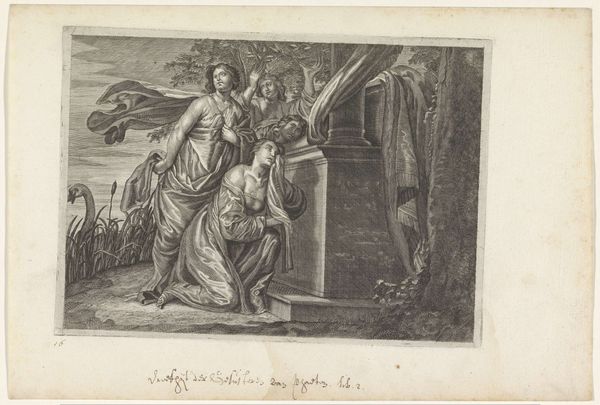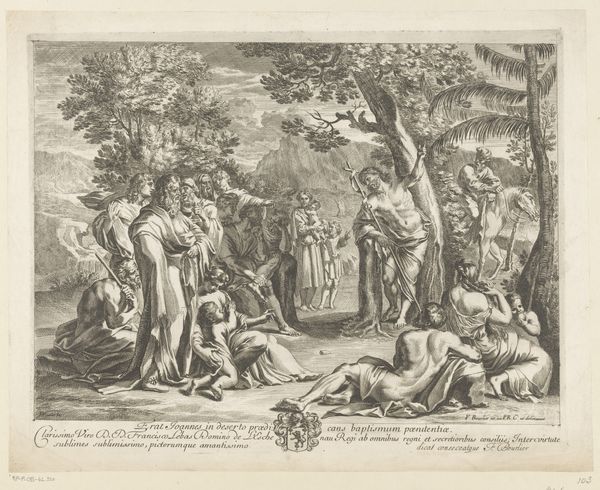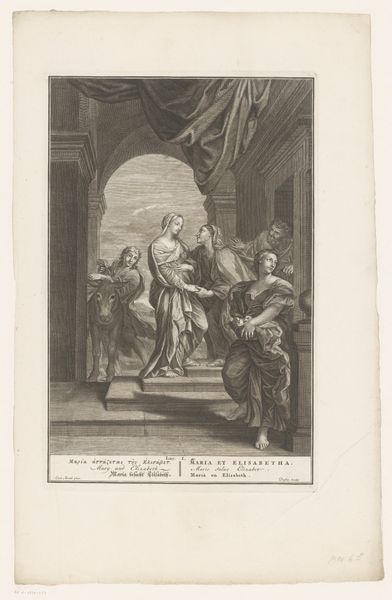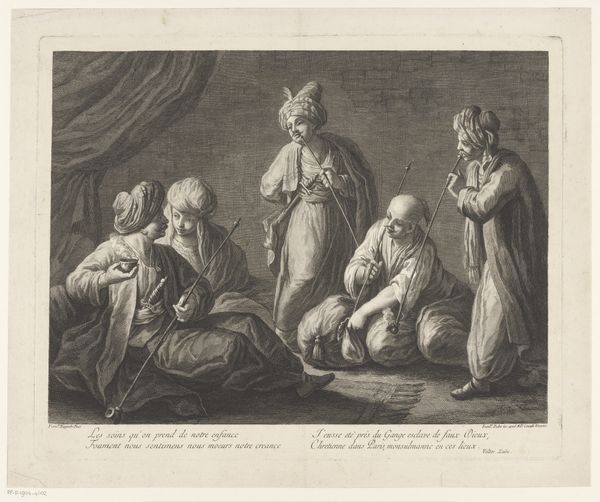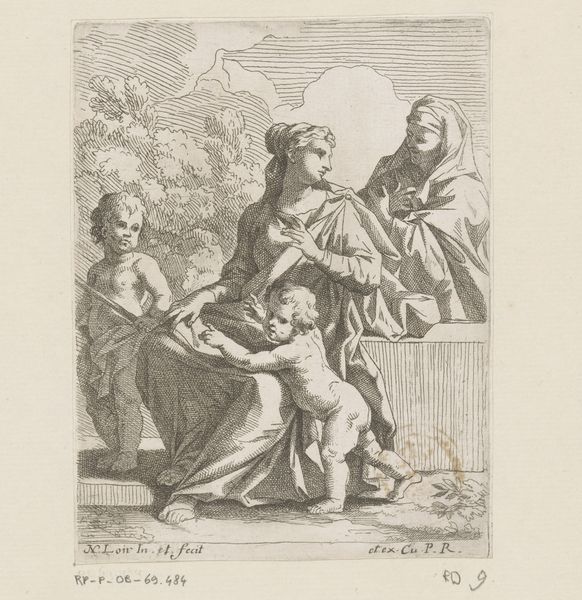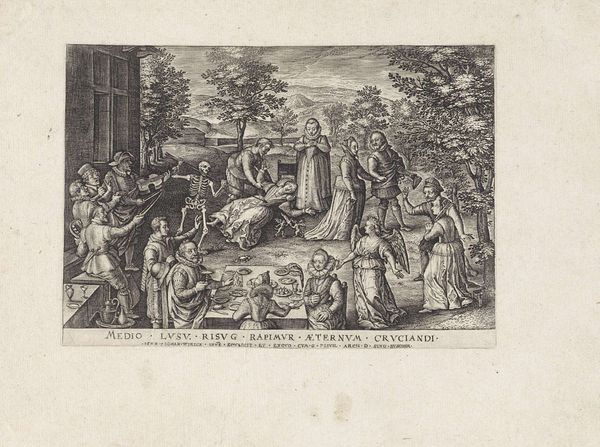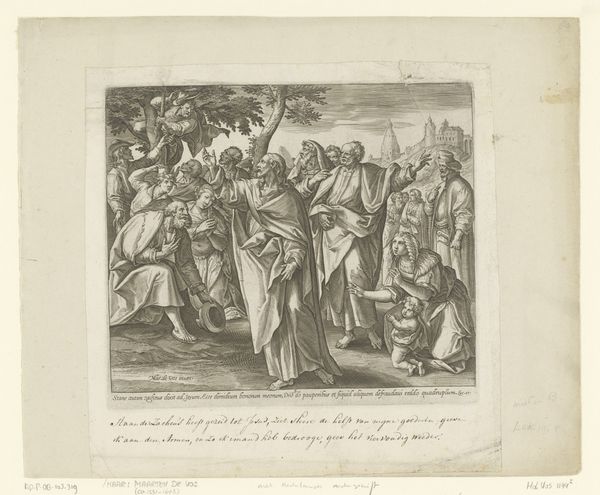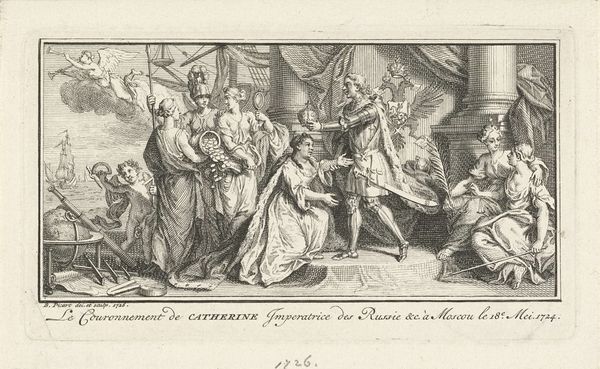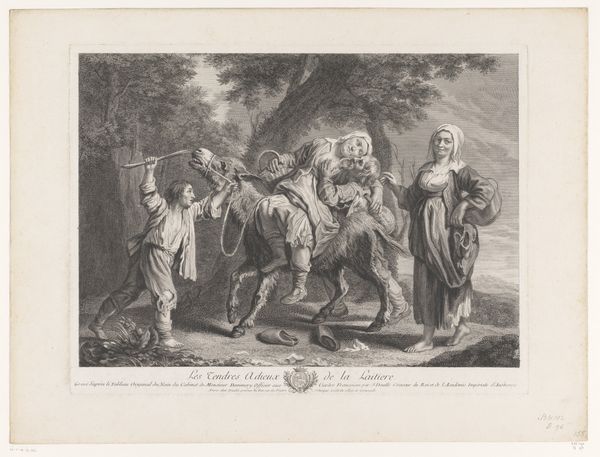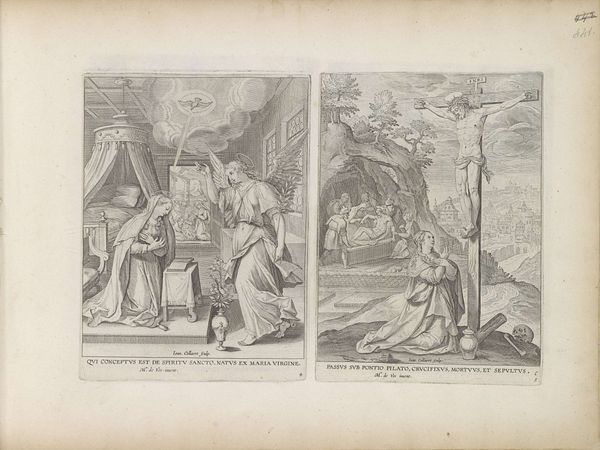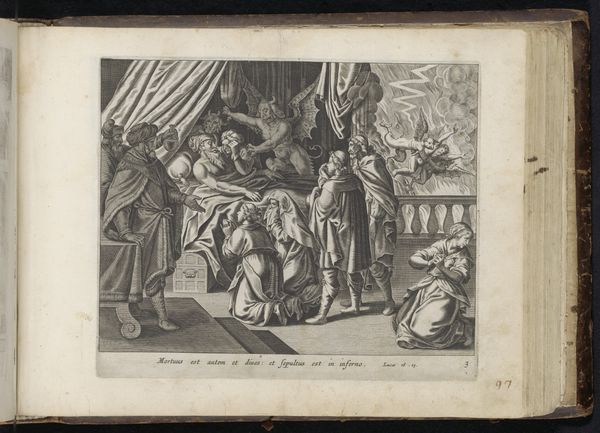
engraving
#
allegory
#
mannerism
#
figuration
#
history-painting
#
engraving
Dimensions: height 186 mm, width 258 mm
Copyright: Rijks Museum: Open Domain
Curator: At first glance, it strikes me as intensely staged—almost theatrical in its arrangement. Editor: That's fair. Shall we introduce folks to the piece? What we're looking at is an engraving titled "Personification of Caritas and Christ on the Cross," dating back to somewhere between 1547 and 1591. It was created by Gerard de Jode. And, fittingly, it resides at the Rijksmuseum. Curator: Focusing on the composition, we see a clear division. The engraving utilizes a strong juxtaposition, splitting the scene into two distinct halves, linked, of course, by the allegory itself. Note the contrast between the chaotic, suffering world dominated by the cross on the left, and the more serene, structured setting of Caritas with children on the right. Editor: That cross is so stark against that stormy sky. Gives you chills. And then this regal Caritas—almost a Madonna figure—in this contained space with flowing drapery. There is something incredibly unsettling, like two separate dramas playing out at once. A bit of hopefulness perhaps—those cherubic figures hint at redemption maybe, even playfulness. Curator: Indeed. De Jode masterfully employs Mannerist conventions. Consider the elongated figures, the dramatic use of light and shadow to heighten emotional impact, the stylized poses of the allegorical figures—all characteristic of the period. The detailed linework achieved through the engraving process contributes to a sense of heightened realism. Editor: All those fine lines – impressive. I almost missed that cityscape back there. I wonder about his intent – did he want a sense of disquiet? The children seem almost like props here too–unnatural, I guess? Perhaps reflecting anxieties of the era? Curator: Art historians interpret such visual strategies as devices for exploring complex theological ideas. The contrast is purposeful, urging contemplation on faith, salvation, and Christian duty during the Reformation. The formal elements, like perspective and scale, contribute to a narrative loaded with meaning. Editor: Very well articulated! You've given me something to chew on. I am keen to study this in detail some day. Curator: And hopefully, dear listener, so are you. Thank you.
Comments
No comments
Be the first to comment and join the conversation on the ultimate creative platform.
